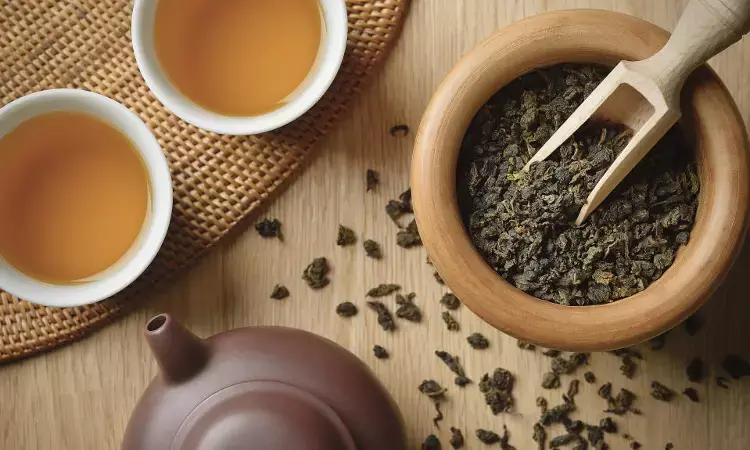- Home
- Medical news & Guidelines
- Anesthesiology
- Cardiology and CTVS
- Critical Care
- Dentistry
- Dermatology
- Diabetes and Endocrinology
- ENT
- Gastroenterology
- Medicine
- Nephrology
- Neurology
- Obstretics-Gynaecology
- Oncology
- Ophthalmology
- Orthopaedics
- Pediatrics-Neonatology
- Psychiatry
- Pulmonology
- Radiology
- Surgery
- Urology
- Laboratory Medicine
- Diet
- Nursing
- Paramedical
- Physiotherapy
- Health news
- Fact Check
- Bone Health Fact Check
- Brain Health Fact Check
- Cancer Related Fact Check
- Child Care Fact Check
- Dental and oral health fact check
- Diabetes and metabolic health fact check
- Diet and Nutrition Fact Check
- Eye and ENT Care Fact Check
- Fitness fact check
- Gut health fact check
- Heart health fact check
- Kidney health fact check
- Medical education fact check
- Men's health fact check
- Respiratory fact check
- Skin and hair care fact check
- Vaccine and Immunization fact check
- Women's health fact check
- AYUSH
- State News
- Andaman and Nicobar Islands
- Andhra Pradesh
- Arunachal Pradesh
- Assam
- Bihar
- Chandigarh
- Chattisgarh
- Dadra and Nagar Haveli
- Daman and Diu
- Delhi
- Goa
- Gujarat
- Haryana
- Himachal Pradesh
- Jammu & Kashmir
- Jharkhand
- Karnataka
- Kerala
- Ladakh
- Lakshadweep
- Madhya Pradesh
- Maharashtra
- Manipur
- Meghalaya
- Mizoram
- Nagaland
- Odisha
- Puducherry
- Punjab
- Rajasthan
- Sikkim
- Tamil Nadu
- Telangana
- Tripura
- Uttar Pradesh
- Uttrakhand
- West Bengal
- Medical Education
- Industry
Eugenia biflora Tea lowers blood sugar in diabetics but prolonged use tied to toxicity

DM2 is considered a global public health problem and evolved with the rise in urbanization which has changed lifestyles and has led to the adoption of unhealthy behavior patterns (reduction of physical activity and a high-calorie diet).
The leaves of Eugenia biflora (Myrtaceae) are traditionally used by Amazonian populations for the control of diabetes. However, a recent study suggests that E. biflora leaves have a hypoglycemic effect but can be harmful to its users due to their considerable toxicity. The study findings were published in the Journal of Ethnopharmacology on April 11, 2022.
A group of Myrtaceae species, popularly known as "Pedra-ume-caá" in the Brazilian Amazon, are commonly used for the treatment of diabetes. Eugenia biflora leaves are sold in street markets and traditionally used by Amazonian peoples in the form of tea to control diabetes, diarrhoea, intestinal inflammation and bleeding. Despite its use in folk medicine, chemical and pharmacological studies with this species are still scarce. Therefore, Dr Marcos B. Machado and his team conducted a study to identify the chemical constituents and evaluate the hypoglycemic and toxic effects of the dry extract of the E. biflora leaves (DEEB).
In this study, the researchers analysed DEEB, obtained by infusion, using LC-HRMS and NMR, whose catechin flavonoid was quantified using NMR. They evaluated the antidiabetic effect of DEEB according to its inhibition of the enzymes α-amylase and α-glucosidase, as well as the content of total phenols, free radical scavenging and antiglycation activities, and its in vitro cell viability. They also performed oral maltose tolerance and chronic multiple-dose tests (28 days) in streptozotocin-induced diabetic mice (STZ). They further evaluated the hypoglycemic effect and toxicity of this extract in the multiple-dose assay. They evaluated biochemical parameters, hemolysis, and levels of the thiobarbituric acid reactive species in the liver and performed histopathological analyses of the kidneys and liver.
Key findings of the study:
- Upon analysis, the researchers identified eight phenolic compounds, with catechin (15.5 ± 1.7 mg g−1) being the majority compound and a possible chemical marker of DEEB.
- They found that the extract showed inhibition activity of the enzyme α-glucosidase.
- They noted that the chronic administration of DEEB (50 mg/kg of body weight) reduced glucose levels in diabetic animals, similar to acarbose.
- However, they also noted that the DEEB (100 and 200 mg/kg bw) caused the premature death of mice by D22 of the treatment.
- They reported that one of the mechanisms of toxicity in DEEB may be related to the aggravation of oxidative stress in the liver.
- Upon histopathological study, they found that DEEB failed to minimize the progression of the toxicity of diabetes caused by STZ.
The authors concluded, "This study demonstrated the hypoglycemic potential of E. biflora leaves. However, the prolonged use of this tea can be harmful to its users due to its considerable toxicity, which needs to be better investigated."
For further information:
DOI: https://doi.org/10.1016/j.jep.2022.115276
Medical Dialogues Bureau consists of a team of passionate medical/scientific writers, led by doctors and healthcare researchers. Our team efforts to bring you updated and timely news about the important happenings of the medical and healthcare sector. Our editorial team can be reached at editorial@medicaldialogues.in.
Dr Kamal Kant Kohli-MBBS, DTCD- a chest specialist with more than 30 years of practice and a flair for writing clinical articles, Dr Kamal Kant Kohli joined Medical Dialogues as a Chief Editor of Medical News. Besides writing articles, as an editor, he proofreads and verifies all the medical content published on Medical Dialogues including those coming from journals, studies,medical conferences,guidelines etc. Email: drkohli@medicaldialogues.in. Contact no. 011-43720751


